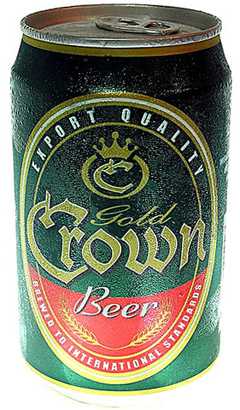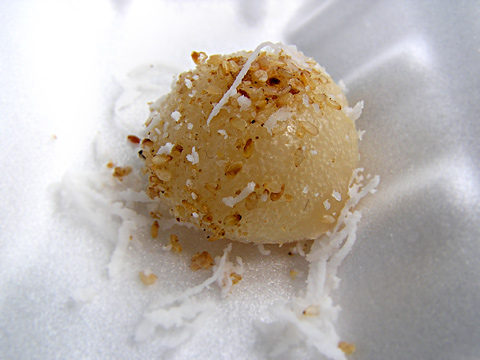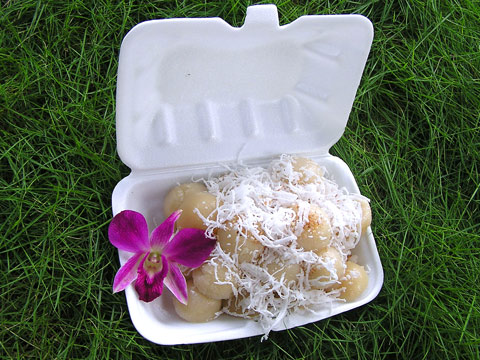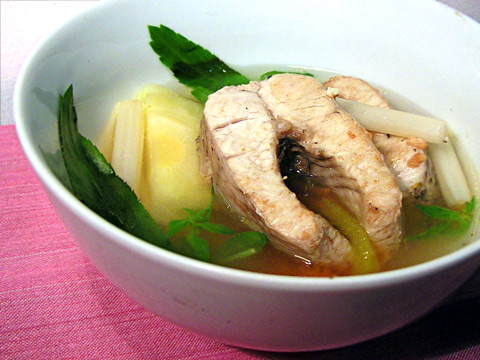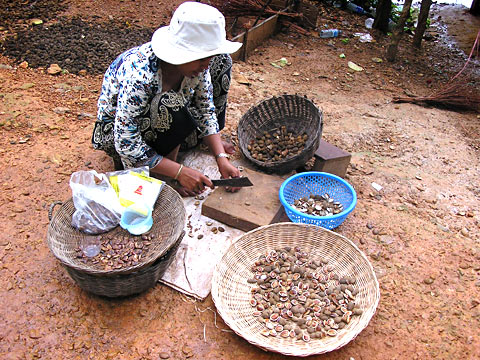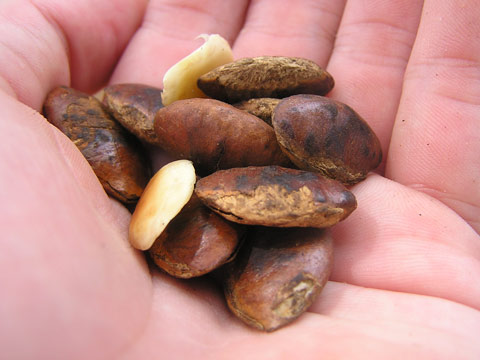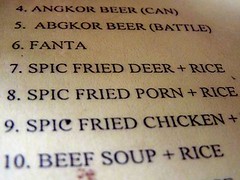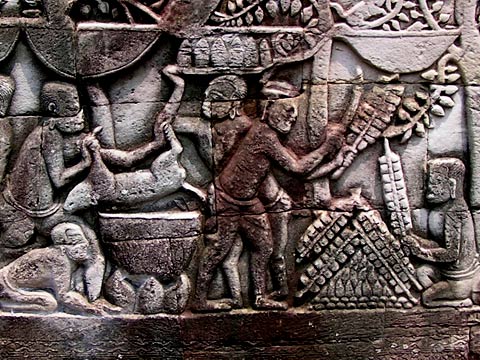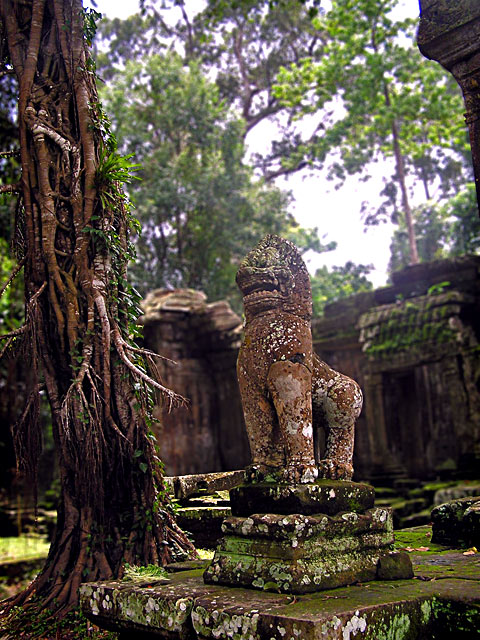A central problem when Cambodia watchers discuss the future of Cambodia is the sense of inevitable, oncoming doom. The local polity may not have fallen entirely off the rails yet, but the train is currently making some irregular metallic grinding sounds. This often leads to a tendency to invoke a nostalgia for the Cambodian past, be it Angkorean era glory or the rose-colored “Paris of the East” Phnom Penh of the 1950s.
What Cambodia is missing, to borrow the words of theorist Jean Baudrillard, is a nostalgia for the future. There are very few Cambodian utopian stories; or even modernising influences that seem to lead anywhere other than dystopia. Regarding Khmer food, modernisation is framed in a similarly dystopic manner: it tends to go hand in hand with Khmer food becoming either more Thai, more Chinese, or rarely, more Western. The hardest thing for me when writing about Khmer food is building a narrative where in the future, Cambodian food becomes ever more Cambodian.
Nostalgia for the future is what sets Meric restaurant in Siem Reap’s Hôtel De La Paix apart as a currently singular achievement in Cambodia: it manages to modernise Cambodian food without undermining more than a thousand years of Khmer cultural tradition, thereby hinting at an optimistic and rich future for Khmer cuisine.
The experience of stepping straight from Siem Reap’s scum-flooded streets into Hôtel l De La Paix’s serene and polished insides couldn’t be more disjunctive, and proceeding through to the restaurant reveals a pooled courtyard with a manicured fig tree that could have been uprooted from the overgrown Ta Prohm. The restaurant offers diners a choice of daybed swings suspended from the four-metre high ceiling in the covered walkway to the restaurant or a more conventional table in the restaurant’s dark and intimate interior.
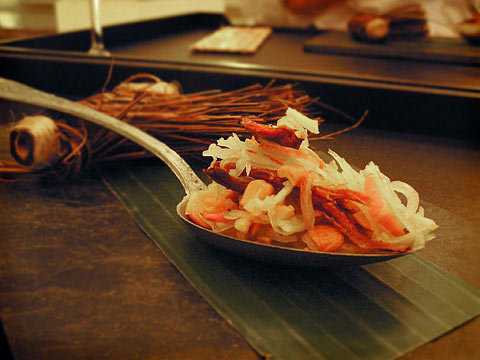
The Khmer Set Menu ($28 a head) draws on the Japanese kaiseki tradition that attempts to pair fresh seasonal ingredients with thought-provoking plateware and garnishes. The origin myth of kaiseki is that a Japanese Zen Buddhist monk, when faced with an empty larder and unexpected guests, offered them a warming stone as a meal for aesthetic contemplation. Although Head-chef Paul Hutt tells me of his Japanese inspiration, he has a typically Cambodian tale that mirrors the monk’s Zen utilitarianism: “when some of the plateware didn’t arrive in time for the opening, we started using leftover slate tiles from around the pool”.
The aforementioned slate has stayed, along with miniature scarves (krama), plinths of granite, shaped banana leaves, a piece of local broom, bamboo, and decorative ceramic tiles. It’s like descending into a cargo cult that has decided that every Khmer object of daily life is directly food-related. If you are not a regular reader of Phnomenon, I like irony more than your average blacksmith, so this concept suits me to a “t”. To illustrate this sense of irony, the Khmer Wedding Amuse Bouche (pictured above*) that kicked off the meal with a few morsels of cashew, fresh pickle and jerky left me thinking that after the gloss of eating the wedding treats had worn off, the bride and groom are left with nought but a shoddy Cambodian spoon and a broom.
Like the unconventional serving ware, the food is undeniably Cambodian and the respectfulness to indigenous flavours and freshness borders on unremitting veneration. While the presentation would scare the hell out of your average Cambodian grandparents, most of the food on the day’s set menu would be intimately familiar to them. As your Cambodian grandparents would probably tell you, getting two sour soups in one meal is a rare treat and was a real highlight. The Pork ribs with Pineapple Sour Soup was served as an individual portion in a tube of bamboo, with a silky coconut stock balanced by a wedge of fresh pineapple, and subtle kroueng mix. Meric deconstruct their Dried Fish and Green Mango Sour Soup into a shot glass of hot, complex dried fish stock, served alongside a small terracotta bowl of fresh green mango (only just creeping into season), fish, boiled egg, and soup fixings. The implication was that you mix the two, so I had to resist the immediate urge to down the ingredients straight with a stock chaser.
It takes plenty of chutzpah to place at least three items on a set menu that rely heavily on dried fish (and reptile, in the slightly astringent Green Starfruit with Dried Snake Salad) when you’re targeting the type of tourists who are laying down $350 a night to stay in the super-luxe bounds of Hôtel De La Paix. It is also an admirable marker of the restaurant’s ambitions to position Khmer cuisine in the global palate.
Outgoing Head Chef Paul Hutt and Executive Sous- (soon to be Head) Chef Joannès Rivière seem to know more about Cambodian food than possibly any Westerner has ever known. In my recollection, there are only three Cambodian recipe books not written in Khmer, and Jo is the author of one of these. While I blunder my own way through the local nosh, they are in the kitchen with a team of talented locals sniped from around Siem Reap, pushing the boundaries of Khmer cuisine both at the traditional and modern ends. And making me nostalgic for more.
Location: inside Hôtel de la Paix, Sivutha Blvd, Siem Reap
* – apologies for the dodgy photo. Shooting food on a swinging daybed at night, with no tripod is not my forte.
